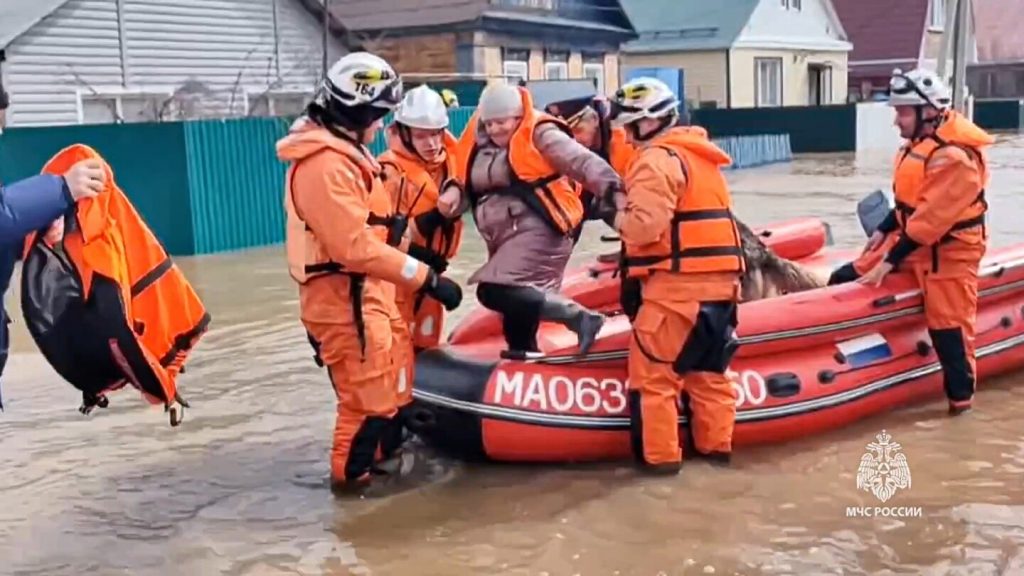The Ural River, spanning over 2,400 kilometers, experienced rising water levels leading to the breaking of a dam in the city of Orsk near Russia’s border with Kazakhstan. This incident resulted in the evacuation of approximately 2,000 residents, with more than 2,400 buildings flooded and power outages in various areas. Videos from the scene showed streets covered in water, with one-story houses submerged. The dam was designed to withstand water levels up to 5.5 meters, but the water level reached 9.3 meters, leading to increased concerns and ongoing evacuation efforts in the region.
Authorities have launched a criminal investigation into possible violations of construction safety regulations and negligence that may have contributed to the dam break. The Ural River, a significant waterway flowing through Russia and Kazakhstan, has faced challenges due to floods in the region. The impact of the flooding extended beyond Orsk, affecting other areas in the Ural Mountains region and prompting the evacuation of nearly 4,000 people. It remains unclear whether those already evacuated in Orsk are included in this figure, emphasizing the scale of the emergency response and the need for coordinated relief efforts.
Local authorities in Orsk and the wider region have been working to manage the crisis and support those affected by the flooding. With residential buildings submerged and critical infrastructure disrupted, the priority is on ensuring the safety and well-being of the evacuated residents. The situation is evolving rapidly, with water levels continuing to rise and posing ongoing challenges for emergency response teams. The community is coming together to provide assistance and resources to those impacted by the disaster, highlighting the importance of solidarity in times of crisis.
As the floodwaters recede and the extent of the damage becomes clearer, efforts will shift towards recovery and rebuilding. The aftermath of natural disasters like this one often requires long-term support and investment in restoring infrastructure and livelihoods. The investigation into the dam break will also shed light on potential gaps in safety protocols and regulatory oversight, leading to improved measures to prevent similar incidents in the future. The resilience of the communities affected by the flooding will be tested in the days and weeks ahead, but the spirit of unity and collaboration will guide the recovery process towards rebuilding a stronger, more prepared region.


